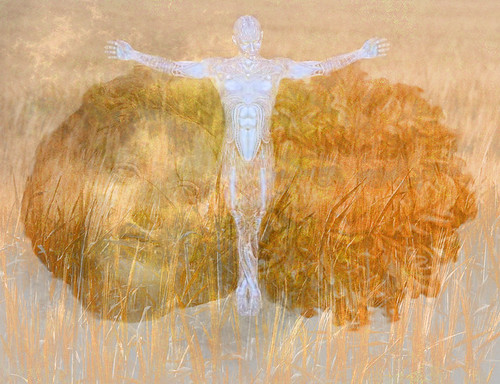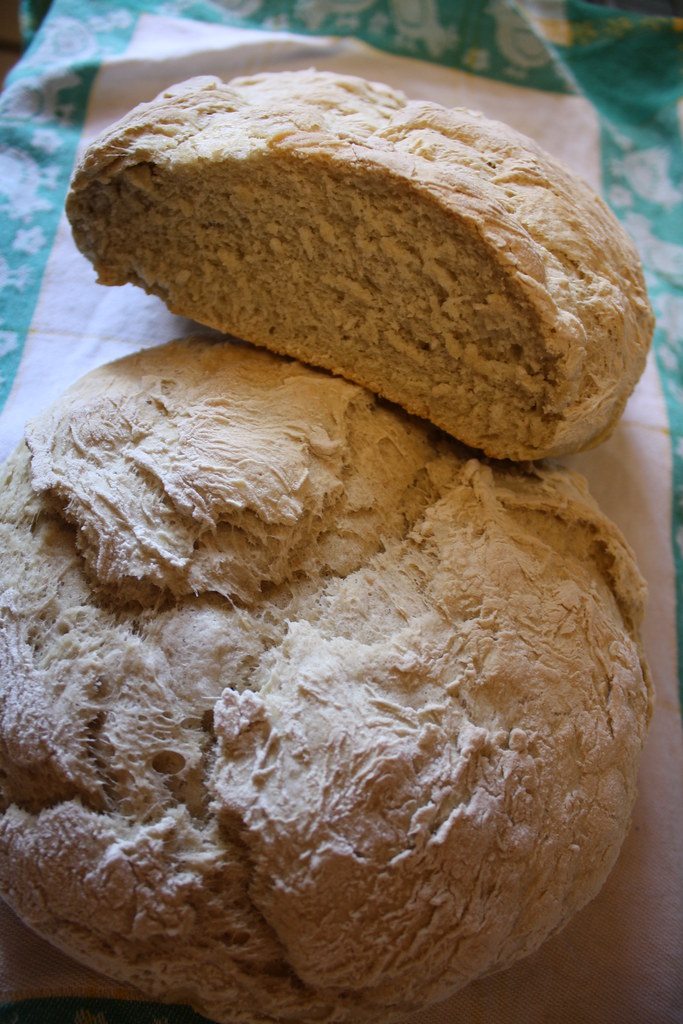
Preparing for a semi-public Lughnasadh ritual that I’m leading motivated me to dive deeper into the holiday and its origins. I wanted to ensure that I accurately portrayed the tradition. In doing so, I found something much deeper, richer, and more robust than the generic versions of Lughnasadh/Lammas that Internet content farms often promote on their SEO-friendly websites. Because of this, I need to emphasize that Lammas is not Lughnasadh. They are not the same. To blend the two without pointing out the distinctions between them cheapens the holidays as a whole.
Anceint origins of Lughnasadh
Lughnasadh gets its name from the god Lugh, who was a member of the Tuatha Dé Dannan. However, Irish legend states Lughnasadh was merely the pinnacle of a much larger event to honor Lugh’s foster mother, the goddess Tailtiu.
The Tailteann Games was also known as the Tailtin Fair, Assembly of Talti, Fair of Taltiu or the Festival of Taltii. The event running from mid-July to early August (according to the more modern Gregorian calendar). It is believed by folklorists to have started somewhere around 1600 BCE. Others date the beginning at 632 BCE. The long festival consisted of Olympic-like games such as the long jump, high jump, running, hurling, spear throwing, boxing, contests in sword fighting, archery, wrestling, swimming, and chariot and horse racing. In addition, there were also reportedly competitions in singing, storytelling, and crafts.
But the event had two other purposes: honoring the dead and the announcement and implementation of new laws. In addition, marriages often occurred during the festival, and some people would also seek winter work at the festival.
The varied ancient Irish literature texts often contradict themselves when talking about the origin of this festival. But to a large extent, they center around the goddess Tailtiu. She was, according to one account, the last queen of the Fir Bolg, one of the ethnic groups in Ireland, and her husband, Eochaid, was the last king. One legend has it that Eochaid created the festival to honor Tailtiu. He also reportedly named the capital after her.
Other legends give the festival a different origins. Another one says that during Eochaid’s reign, the Tuatha Dé Dannan invaded and Eochaid was killed in the First Battle of Mag Tuired. However, the Tuatha Dé king Nuadh was injured in battle and as such Bres, who was was descended from both the Tuatha Dé Dannann and the Formorians, emerged as king. However Bres, as king, decided to enslave the Tuatha Dé Dannan, essentially putting the Formorians back in power.
Lugh came into being after his grandfather, Balor, a leader of the Formorians in Ireland, locked his mother, Ethniu, in a tower. Balor did so because it was prophesied that his own grandson would kill him, and so he tried to head this off by trying to prevent his daughter from having any children. However, Cian, who was with the Tuatha Dé Dannan, found her, and through him she gave birth to triplets. Balor discovered this and cast the triplets into the sea, but one of them, Lugh, was found by the deity Manannan mac Lir, and he gave her to Tailtiu, the Queen of the Fir Bolg, to raise him.
Like Bres, Lugh had to choose between aligning himself with the Formorians or the Tuatha De Dannan. Unlike Bres, he chose the latter and persuaded the Tuatha Dé Dannan to let him join them when he demonstrated that he had abilities that so many other Tuatha Dé also had. After passing a series of tests, he was made the Tuatha Dé Dannan’s leader for a new battle with the Formorians Lugh’s grandfather, Balor, was the Formorian battle leader. The second Battle of Mag Tuired ensued, and Lugh killed Balor in battle, thus fulfilling the prophecy that Balor had tried to avoid. Bres, now deposed as king of Ireland, begged for his life and Lugh allowed him to live provided that he teach the Tuatha Dé Dannan’s how and when to plow, sow, and reap. Lugh then became king of Ireland and ruled for 40 years.
Both Lugh and his foster mother Tailtiu are associated with protecting the harvest and making sure Ireland is fed. Tailtiu is believed to have died while clearing the land so that the people of Ireland would be able to farm. As such, her death is often seen as a sacrifice. One version of the story has Tailtiu on her deathbead calling for this event in her honor. Another account of the Tailteann Games says that Lugh started the festival to mourn and honor his foster mother Tailtiu.
Regardless of the origin of the games, there are earthworks indicating that the area now known as Teltown (Tailtin in the Irish language) showing significant human activity and alteration. This is the area where legend has it that Tailtiu was buried, where the capital was located, and where the Tailteann games reportedly occurred.
So Lughnasadh, traditionally, was not just a celebration of the harvest. It was a major community festival of great importance. It reportedly went on for over a thousand years and was a significant part of the social fabric of ancient Irish culture. Lugh was also honored in parts of Scotland as well, and in Scotland, the festival is called Lùnastal. Cailleach’s Herbarium goes in to greater detail about how it was celebrated in Scotland. It is worth noting that in the Scottish Gaelic language, Lùnastal is the name for the month of August, and the Irish language name for August is Lúnasa.
Lammas tradition and its origins
Now, I will talk about Lammas and explain why Lammas is not Lughnasadh.

Lammas is an Anglo-Saxon festival, with the name derived from the Old English hlafmæsse, which means loaf-mass. The earliest reported reference to the holiday was in the last decade of the 9th century CE. Another reference is from 913 CE,. Little was said about how the holiday was celebrated, but was referred to as the “Feast of First Fruits.” It was always talked about within the context of Christian celebrations. Tradition often involved baking of a loaf of bread which then would be brought to the church for blessing. There were also report of church processions to bakeries, where clergy would bless those working there. Today, the Church of England makes reference to the Lammas loaf.
Lammas’s connections with Paganism and Lughnasadh were not written about until the 19th century and are considered highly speculative. It makes perfect sense that more than one culture would come up with celebrations for the harvest. But that doesn’t prove that one was derived from the other.
Twisting Lughnasadh beyond recognition
My experience with Lughnasadh as a member of a pagan group in Chicago in the 90s illustrates the strange turn that this holiday’s celebrations have often taken with modern neo-Paganism. The Internet was still in its early years and had not become the research resource that it is today. So a lot of the information about Paganism came through the early neo-Pagan writers–often published through Llewellyn Books in Minnesota. In essence, every Pagan group I encountered in the Chicago area—even one focusing on Celtic practice—practiced a form of Wicca, because that’s what people were familiar with. I also had people literally tell me that “Lughnasadh” was pronounced LAM-mas.
One Lughnasadh ritual from that Chicago group that I participated in actually invoked the more modern English folklore of John Barleycorn, whose earliest reference was found in the Elizabethan era. One researcher linked the this with the mythical Anglo-Saxon figure Beowa, whose suffering and resurrection are detailed. There may be significant depth to the celebration of Beowa. But the only depth the John Barleycorn folklore seems to offer is more layers to the phrase “killing a beer.” It’s because the story of him being sacrificed seems particularly focused on grain-based alcoholic drinks such as beer. Poems written in 1624 and 1782 go into rather violent and graphic detail of how John Barleycorn is sacrificed.
In the “Lughnasadh-pronounced-Lammas” ritual I took part in, each of us had a brown paper figure hung around our necks that was supposed to represent John Barleycorn. We were supposed to think about things that we wanted to “sacrifice” or let go, such as bad habits. The priestess then came around to every person standing in the circle, looked each person in the eye and growled, “Do you want to die?”. We were supposed to say “yes.” Then the priestess would sever the head from the body of the paper figure with her athame. The headless paper body would drop to the ground. Personally, I found the procession to be rather distasteful. It kind of turned me off to Lughnasadh until I learned more about the holiday later on.
So this is why I say Lammas is not Lughnasadh. And John Barleycorn, while certainly legitimate folklore, feels to me like a sadistic drinking song that doesn’t belong with either holiday. But that’s just my opinion.
Which brings me back to today and the Tailtiu and Lugh connection to Lughnasadh.
Selling Celtic and Anglo-Saxon culture short
Yes, we can say that Lughnasadh and Lammas are related to the first harvest of the year. But that’s about all they have in common. To imagine some Indo-European rite that somehow birthed both of these traditions is highly speculative. Such a notion frankly sells both the Gaelic and Anglo-Saxon cultures short. It is equally if not more conceivable that the origin of both celebrations lies in the land and the August climate making the first harvest possible, as opposed to some proto-ritual birthing both traditions.
I wrote a post about Celtic erasure in June that criticized the tendency of many neo-Pagans to lump a number of ancient celebrations together. Many of them consider these celebrations essentially one and the same. In doing so, they have often unwittingly continued the Celtic erasure that had been English policy for centuries. Yes, it’s fine and even a good thing to talk about what these traditions have in common. But to lump these holidays together without making distinctions between the two is disrespectful to both ancient cultures. The origins of modern neo-Paganism came out of Wicca in the middle of the 20th century. Given that Wicca came out of England, both the practices and research promoted with Wicca were a reflection of mid-20th century English thinking. Some Wiccans today may lump all these holidays into traditions of the “English speaking world for over a thousand years.” But such talk ignores how English culture and language was forced down the throats of many Gaelic and Welsh speakers.
As I have said before, I see Celtic Paganism and the four Celtic Fire Holidays to be open to anyone who wishes to explore the spirituality associated with them. But when doing so, people should make an effort to understand the traditions on their own terms. Metaphorically speaking, if you are invited into a Celtic home, take your shoes or hat off if asked. Give the host the respect that reasonable guests would offer. You are their guest, not their landlord. The Gaels in both Ireland and Scotland had horrific experiences with English-speaking landlords, as demonstrated by both the Irish Famine and the Highland Clearances .
So, on this, the first anniversary of what is now the Pagan.eco website, I felt it appropriate to share this knowledge about these holidays. There probably isn’t any harm in making aspects of Lughnasadh and Lammas part of the same celebration, as long as you clearly identify which aspects come from which traditions. Just don’t say that “it’s all the same.” Like I said, Lammas is not Lughnasadh. And yeah, I’d leave the tasteless and sadistic English drinking song out, too, but that’s just me.

1 thought on “Lammas is not Lughnasadh”